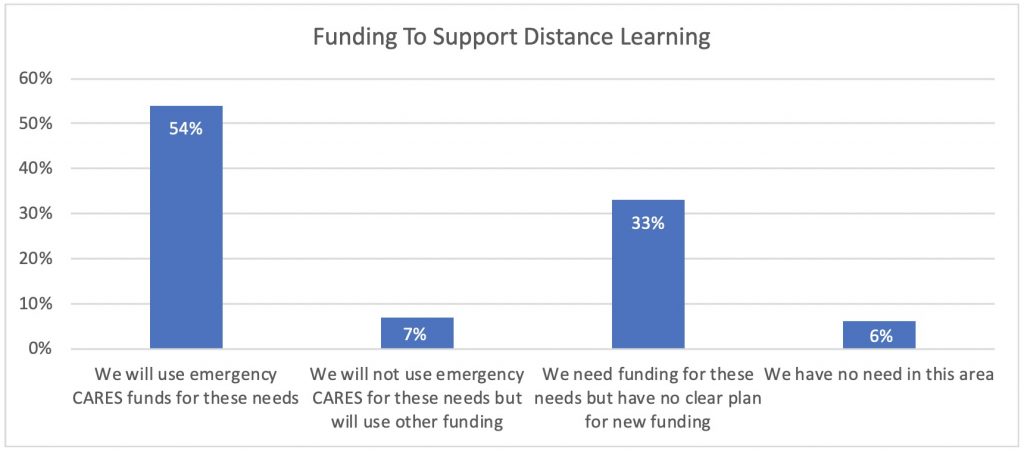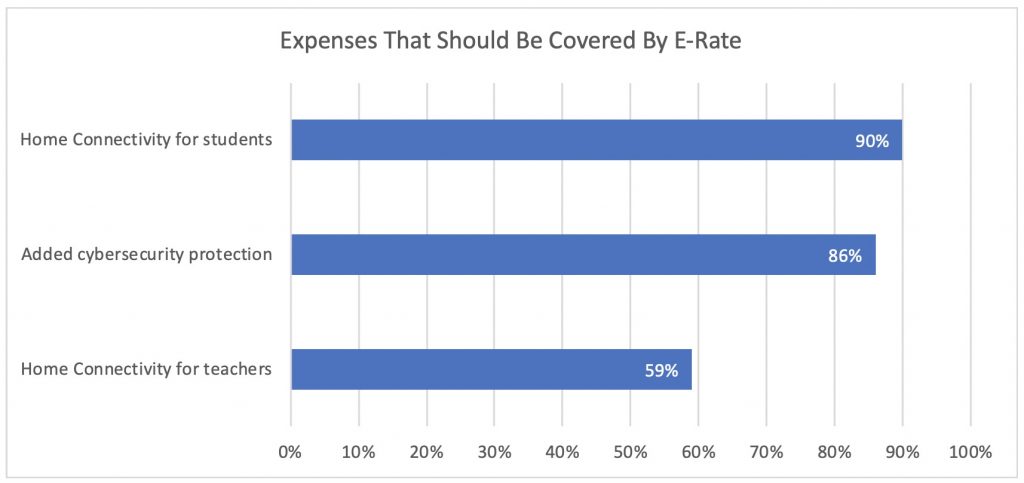School Districts Banking on CARES Act to Help With Tech Purchases for the Fall
Most school districts are planning to use federal coronavirus relief funding to support remote learning, according to a new survey of district IT leaders, in what amounts to a dose of financial support that is likely to help drive new tech purchases in the upcoming school year.
That finding comes from a recent survey by the Consortium for School Networking, a nonprofit representing K-12 ed-tech leaders. And it’s not an altogether rosy picture for tech spending: Even with a dose of federal assistance from stimulus dollars, district tech officials have a bleak outlook for their IT budgets going into the fall because of COVID-19-related financial pressures.
Conducted in late May, CoSN’s survey included responses from 227 district IT leaders, three-quarters of whom were from districts with fewer than 10,000 students.
More than half of the survey respondents—54 percent—said they plan to use stimulus dollars allocated by Congress via the CARES Act. However, about a third of respondents (33 percent) said they are in need of federal assistance, but have no clear plan for how they would access that money.

The roughly $13 billion allocated by Congress in the spring provides schools with several different options to spend the money. Ed tech is on that list, and the CoSN survey indicates that district IT leaders are expecting to ramp up spending on tech acquisitions— specifically devices and digital curricula—to facilitate remote learning.
But districts in some states, such as Texas, won’t be receiving any additional money from the CARES Act. Those states are redirecting that money toward revenue lost during the current economic downturn spurred by the pandemic.
The CoSN report points this out: “CARES funding may not result in any additional funds for some states—as one respondent pointed out, ‘CARES Act funding is not feasible to [our] school districts because any CARES Act funding we obtain will result in an equal decrease in state aid.’”
Connectivity ‘As a Right’
District IT leaders also are overwhelmingly in support of the Federal Communications Commission expanding its E-Rate program to cover broadband access at home for students and teachers. In March, the FCC eased its rules for the E-Rate program to allow ed-tech vendors new flexibility to provide schools with improved broadband access.
However, nine out of 10 respondents said the federal program that provides discounts to help U.S. schools and libraries improve internet access should also cover home Wi-Fi access for students as a result of remote-learning needs.
And the issue of lacking high-speed internet extends to teachers. While only 4 percent of teachers don’t have robust wireless access at home, according to a nationally representative EdWeek Research Center survey of 785 educators, the issue is magnified in rural areas, where broadband coverage is spotty, scarce, pricey, or not available at all.
Nearly 60 percent of the CoSN survey respondents said the E-Rate program should cover connectivity for teachers.
That coincides with a majority of district IT leaders—some 87 percent—highlighting off-campus connectivity as their most common need to support remote learning heading into the new school year. One survey respondent underscored this point by commenting that “connectivity has to be seen as a right.”
Aside from connectivity, district officials identified cybersecurity, mobile devices, and online learning platforms as their next most pressing needs.


